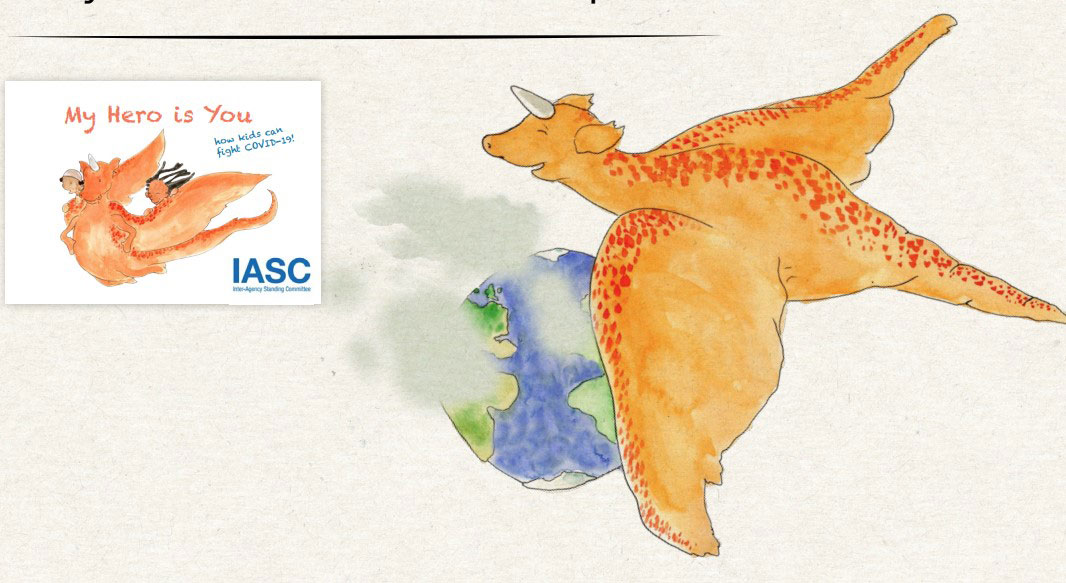My Hero is You: How kids can fight COVID-19, a children’s book designed to help children understand and adapt to the pandemic, was initially launched in six languages. Today, it is one of the most translated children’s books in history, with over 137 translations and more than 50 multimedia adaptations and accessible formats available. This includes a film adaptation of the imaginary character, Ario, flying around the world to support children and helping them cope with the impacts of the COVID-19 pandemic. It became a story of global solidarity and the product of extensive collaboration among actors, organizations and communities to support children and their families’ wellbeing.

As a new year approaches, the world continues to adapt to the everchanging COVID restrictions. To help children maintain hope, Ario’s journey continues for a sequel: My Hero is You 2. The IASC MHPSS Reference Group released this new video adaptation that conveys messages of hope, resilience, solidarity, and empowerment to children around the world. A team led by Stanford Medicine adapted these stories into a 4-minute animated film, with input and oversight from the IASC MHPSS RG, UNICEF, and WHO.

As a new year approaches, the world continues to adapt to the everchanging COVID restrictions. To help children maintain hope, Ario’s journey continues for a sequel: My Hero is You 2. The IASC MHPSS Reference Group released this new video adaptation that conveys messages of hope, resilience, solidarity, and empowerment to children around the world. A team led by Stanford Medicine adapted these stories into a 4-minute animated film, with input and oversight from the IASC MHPSS RG, UNICEF, and WHO. Accompanying My Hero is You, Actions for Heroes is a guide for teachers and caregivers on how to have heartfelt dialogues with children and to educate them about coping with COVID-19 related challenges. It is recommended that adults read the storybook with children.

It is recommended that adults read the storybook with children. The guide not only explains how adults can create safe spaces for children to openly share their feelings about the virus, but it also directs adults on how to promote positive actions for children to protect themselves and others.





